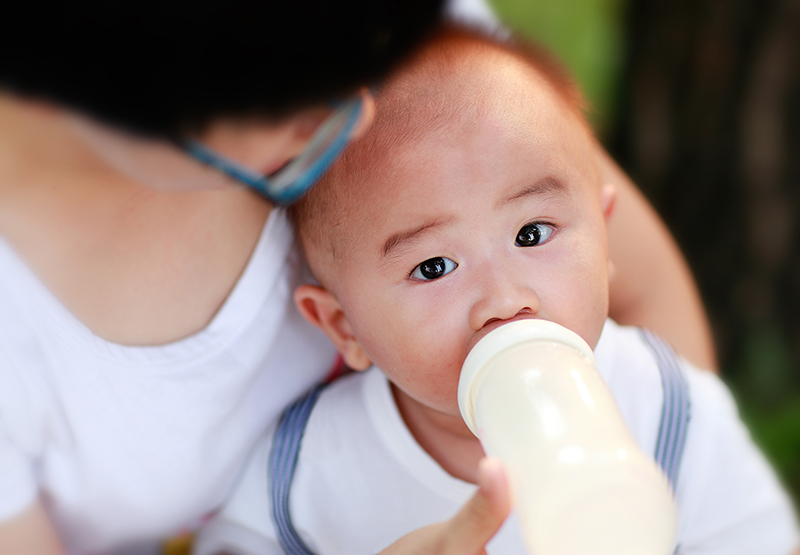Families For Life | Weaning: Stopping Breastfeeding-Babies

Maybe you’re looking forward to stopping breastfeeding, or maybe you feel a bit nervous about it. Whether it’s you or your baby who sets weaning in motion, here’s how you can make the process easier.
What is weaning?
Weaning means stopping breastfeeding.
Weaning is the end of breastfeeding, when your baby no longer has any breastmilk. Weaning starts when your baby has any food other than breastmilk at times during the day and ends when she no longer has any breastmilk.
You might decide to stop breastfeeding when or before your baby reaches 6 or 12 months. For example, you might find that you start thinking about weaning when you’re getting ready to return to work.
Your baby might even start weaning before you’re ready, but this is less common.
The weaning process
When you’re stopping breastfeeding, it’s a good idea to take it slowly. This way your baby can get used to the change in routine and diet, and your body can get used to no longer making milk.
If the decision to wean is yours rather than your baby’s, you might need to offer some extra comfort as you make the transition to bottle-feeding or drinking from a cup.
Weaning for baby
You can wean baby to a cup or a bottle. This decision depends on your baby’s age – if your baby is around 7-8 months, he could learn to drink straight from a cup.
The age of your baby also determines whether to replace the breastfeeds with infant formula or cow’s milk – babies younger than 12 months shouldn’t be offered cow’s milk, so they need to be weaned onto formula.
When you start the weaning process, the first step is to replace the breastfeed your baby seems least keen on with expressed breastmilk, infant formula or cow’s milk, from a cup or bottle. Drop one breastfeed at a time, and wait a few days or a week before you drop the next one.
Weaning for mum
If you stop breastfeeding quickly, your breasts might fill with milk (engorge) and get very uncomfortable. To prevent engorged breasts, you might need to express your milk sometimes. Express just enough for comfort – if you express too much you’ll actually stimulate an increase in supply.
Some mums need to go from one feed a day to one feed every few days to avoid engorged breasts, before stopping breastfeeding altogether.
Watch out for lumpy breasts. After your baby has stopped breastfeeding, you might have lumpy breasts for 5-10 days. A lump might indicate a blocked duct or the beginnings of mastitis. If this happens, try massaging the lumps or expressing a small amount of milk. This might help reduce the lumpiness.
If any lump is persistent or painful or you start feeling flu-like symptoms, see your General Practitioner (GP) as soon as possible.
Extra cuddles and spending a lot of time together can help your baby feel secure and loved without relying on the breast.
Weaning, pregnancy and contraception
Breastfeeding gives you some protection from getting pregnant, especially if:
you’ve been exclusively breastfeeding
your periods haven’t started again
your baby is less than six months old and doesn’t sleep for long periods between feeds.
When you start to wean your baby, breastfeeding might give you less protection from getting pregnant, so it’s a good idea to consider other forms of contraception.
If you’re thinking about oral contraception – either the combined pill or the minipill – there are a couple of things to bear in mind:
It’s safe to start the combined pill (oestrogen and progesterone) while your baby is still having some breastfeeds. The combined pill helps diminish your supply of breastmilk.
You need to take greater care with the minipill if it’s your only contraception in addition to breastfeeding. For example, you must take it within three hours of the same time every day.
The pill is prescription medicine, so you’ll need to see your GP or obstetrician to get it. Your doctor will talk you through how to use it properly so you’re protected from getting pregnant.
Things to note
To wean an older baby or toddler, you might want to go slowly, changing your child’s routine gradually.
It’s also quite common to feel a bit down after your last feed, even if you were looking forward to weaning.
Your hormones might take some time to return to normal. Some women begin ovulating as soon as they reduce night feeds or begin to wean, while others find that the return of ovulation and menstruation takes several months.
© raisingchildren.net.au, translated and adapted with permission
Explore more

DID YOU KNOW?
Play is a great relationship builder. Spending time playing with your child sends a simple message – you are important to me. Help your child learn about who she is and where she fits in the world.
READ MORE